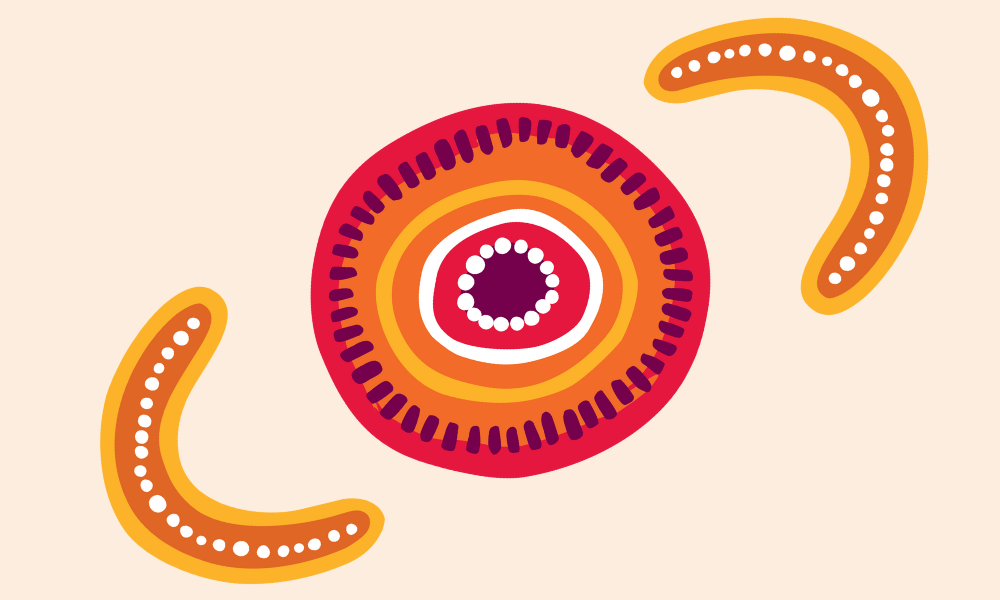Automatic language translation
Our website uses an automatic service to translate our content into different languages. These translations should be used as a guide only. See our Accessibility page for further information.
Closing the Gap is a national movement to work towards improving outcomes for Aboriginal communities. All of our work with Aboriginal people, families, communities and organisations contributes to Closing the Gap.
The National Agreement on Closing the Gap gives us directions and goals to achieve improved outcomes. However, Closing the Gap spans beyond these goals – it requires a real commitment from Australian governments to do things differently and work in genuine partnership with Aboriginal communities.

The National Agreement on Closing the Gap is an agreement between the Australian Government and the Coalition of Peaks. The Coalition of Peaks is a group of Aboriginal organisations that came together to represent Aboriginal people's voices. They make sure Aboriginal people are involved in all work towards Closing the Gap.
The National Agreement explains Government’s responsibility to improve how we serve and support Aboriginal communities. It outlines what changes we need to make and how to make them. It includes work for national, state and local governments.
The National Agreement is built around three concepts. Each one relies on the others to achieve our goal of Closing the Gap.

Aboriginal Peaks and Governments are partnering to make sure that community has a say in how governments meet their Closing the Gap commitments. Partnership means a true collaboration where decision making is shared.
Partnership is essential to Closing the Gap because only Aboriginal people themselves have the answers to issues affecting their communities.

The National Agreement tells us how we need to change the way we work with Aboriginal communities. It sets out goals called Priority Reforms that explain what changes are needed and how Government can make them.
They focus on using Aboriginal knowledge and practice to improve our systems and services. They ask government to commit to partnership in all of our work.

The National Agreement also tells us how Government can improve the way we serve and support Aboriginal people. It sets out 17 goals called Socioeconomic Targets to improve the lives of Aboriginal communities.
These goals were based on areas where Aboriginal communities told us we need to make change.
In Australia, a cycle of systemic disadvantage and intergenerational trauma has created conditions where Aboriginal communities are not appropriately supported in their work to heal from the abuse of past systems. Despite this, Aboriginal communities continue to be strong and resilient.
The National Agreement gives us a set of goals and shows us how we can reach them.
All work towards these goals must be guided by Aboriginal people and led in partnership with Aboriginal people. This is the only way to make lasting change for our communities.
All government agencies in NSW are responsible for five Priority Reforms.
Priority Reform 1: Formal partnerships and shared decision making is about building and strengthening partnerships with Aboriginal people and organisations. We need to give Aboriginal people a say in all decisions that affect them. We also need to prioritise involving Aboriginal people when designing and delivering programs and policies so they meet communities’ needs.
Priority Reform 2: Building the Community-Controlled sector is about building and strengthening organisations that are designed and controlled by Aboriginal people. We know that when Aboriginal-led organisations deliver services to our communities, we get better results. We need to enable Aboriginal controlled businesses to compete for funding and opportunities, and ensure that Aboriginal people can access services tailored to their needs and priorities.
Priority Reform 3: Transforming government organisations asks us to assess how we do business and how that might be preventing positive outcomes. We need to tackle unconscious bias and racism in workplaces, processes and systems. We also need to create culturally safe environments for Aboriginal communities and staff through strong partnerships and self-determination.
Priority Reform 4: Shared access to data and information focuses on providing Aboriginal people with shared access to locally relevant data and information about their communities. Access to data helps people understand what is happening in their communities and empowers them to set priorities, allocate funding, drive development and advocate for change.
Priority Reform 5: Employment, business growth and economic prosperity is a NSW specific reform about growing the Aboriginal business sector and increasing job opportunities for Aboriginal people. Supporting Aboriginal employment and businesses allows people and organisations to thrive, enabling them to achieve better outcomes for their communities.
In NSW, DCJ is responsible for five Closing the Gap Socioeconomic Targets.
Target 9a. Increase the rate of Aboriginal people living in non-overcrowded housing to 88%.
Target 10. Reduce the rate of Aboriginal adults in prison by 15%.
Target 11. Reduce the rate of Aboriginal young people (10-17 years) in detention by 30%.
Target 12. Reduce the rate of Aboriginal children in out-of-home care by 45%.
Target 13. Reduce the rate of family violence and abuse against Aboriginal women and children by 50%.

The NSW Closing the Gap Implementation Plan is the NSW Government’s approach to achieving these goals in partnership with NSW CAPO. It shows which departments are responsible for each goal. We are leading a range of projects on this implementation plan and supporting other agencies who lead other goals.
Explore the pages below to find out about these projects.
In NSW, all government departments work in partnership with organisations from the Coalition of Peaks to drive progress towards Closing the Gap. At DCJ, we work the most with AbSec (NSW Child, Family and Community Peak Aboriginal Corporation) and ALS (NSW Aboriginal Legal Service).
We work with AbSec and ALS whenever our work impacts Aboriginal communities. They help us make sure we’re listening to the needs of Aboriginal communities and including Aboriginal people in decision making. This is a crucial step to achieve better outcomes for Aboriginal communities in NSW.
Last updated: